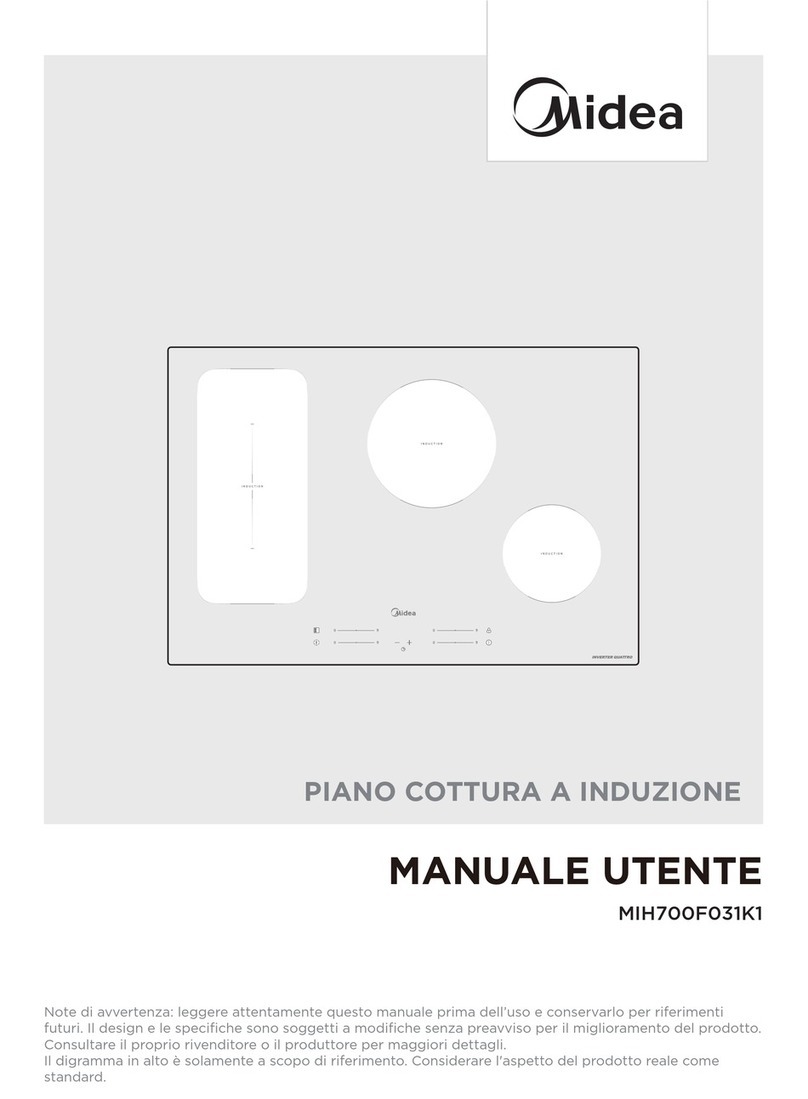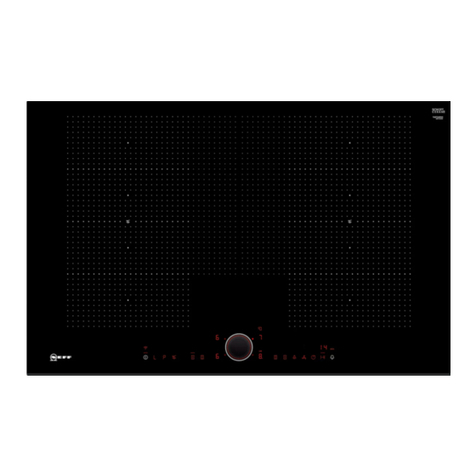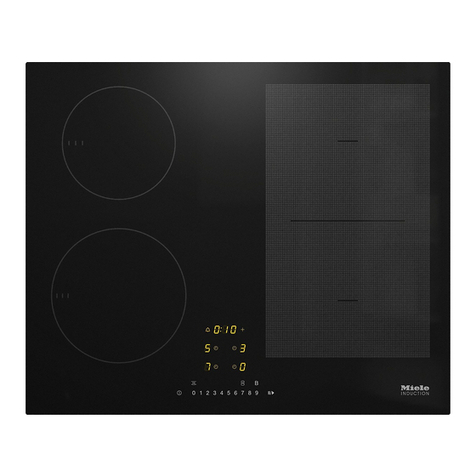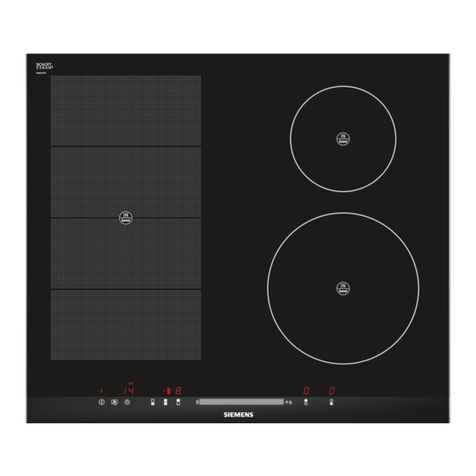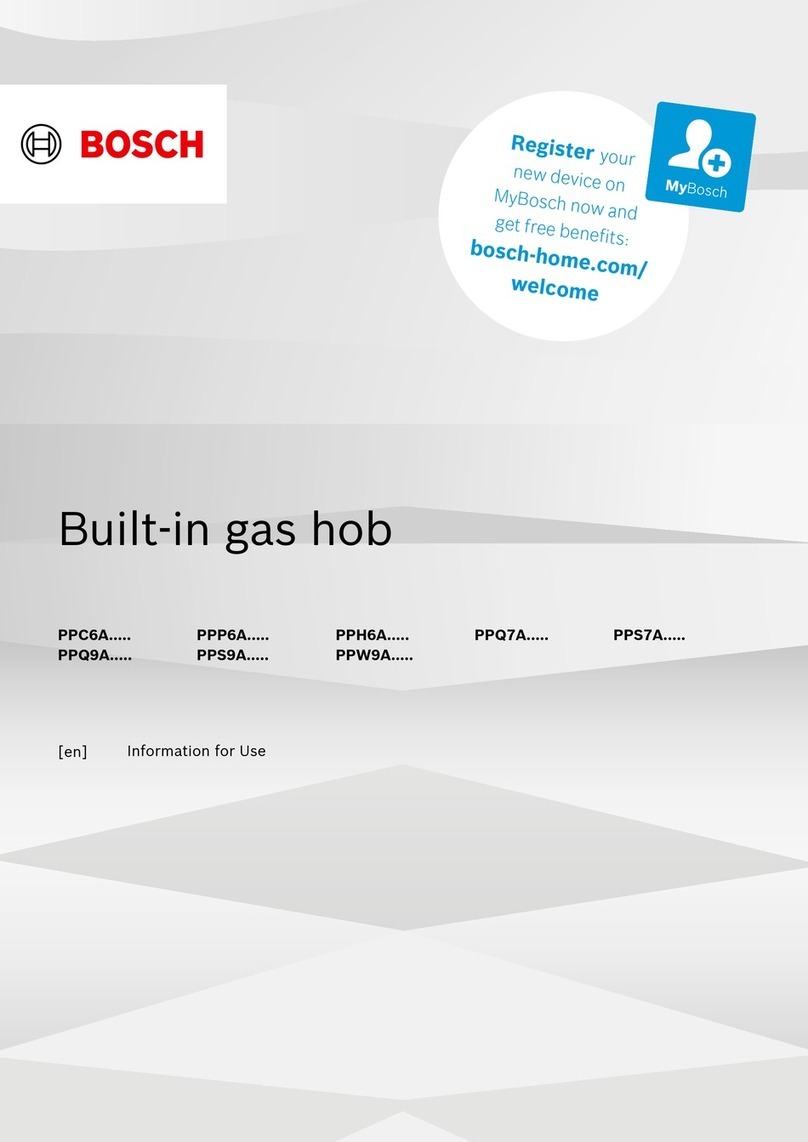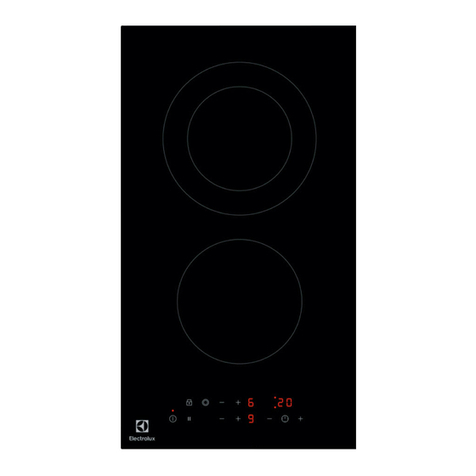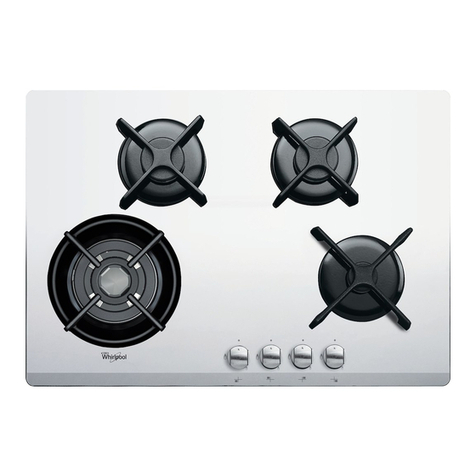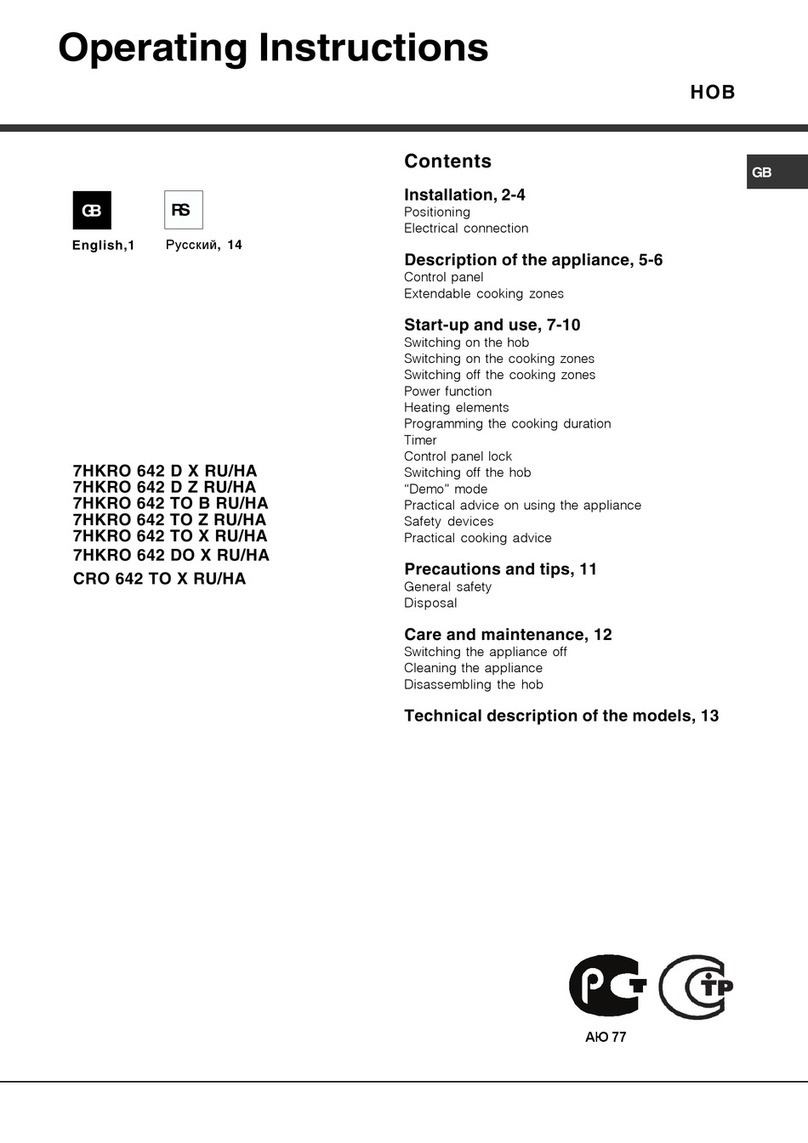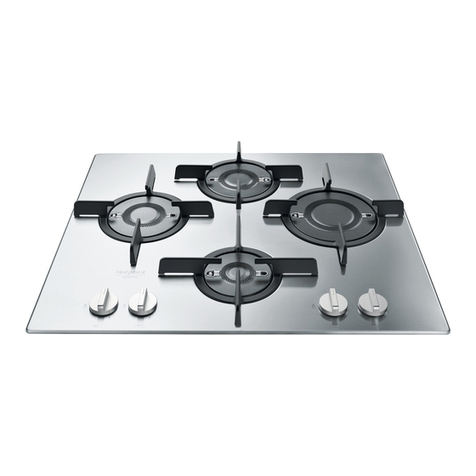Smalvic PI-EL SERIES Troubleshooting guide

- 1 - 9880103502-EN-201115.doc
HOBS
BUILT-IN
MODELS
SERIES PI-EL : PI-NC30 / PI-63 / PI-93 / PI-NC60 / PI-NC63 / PI-NC93 / PI-SD45
SERIES PC : PC-SY60 / PC-SY75 / PC-SY90 / PC-BB60 / PC-BB75 / PC-BB90
SERIES PI-PD : PI-PD60 / PI-PD70 / PI-PD75 / PI-PD90
SERIES PI-PFT: PI-PFT35 / PI-PFT45 / PI-PFT95
INSTRUCTIONS FOR USE
INSTALLATION
AND MAINTENANCE
IMPORTANT: KEEP THIS MANUAL CAREFULLY
.
PRODUCT LABEL

- 2 - 9880103502-EN-201115.doc
IMPORTANT SAFETY INSTRUCTIONS
Read and follow all the instructions before using this item
to prevent the potential risk of fire, electric shock, personal injury or damage to the
item itself as a result of improper use.
This household appliance is compliant with the provisions of the European
Community Directives
- LOW VOLTAGE DIRECTIVE – 2014/35/EU former directive 2006/95/EC
- GAS DIRECTIVE 2009/142/EC
- ELECTROMAGNETIC COMPATIBILITY DIRECTIVE 2014/30/EU former
directive 2004/108/EC
INSTRUCTIONS FOR THE HOB
GAS BURNER IGNITION AND ADJUSTMENT
For models with the automatic ignition below the knob, position the pot on the burner
grill. Push and turn the knob anti-clockwise to the maximum position - star. You will
hear the ignition spark and then the burner ignite, Fig. 01, (all glow plugs on the hob
if one of the knobs is actuated).
Keep the knob pressed until the burner has completely ignited. After igniting the
burner, turn the knob to the desired position, Fig. 02.
For models equipped with both electronic and safety ignition, follow the same
procedure described above.
In order to give the thermocouple the necessary heating, hold the knob down for at
least 5 seconds. Release the knob, after which the burner must remain lit.
ATTENTION:
1) Do not store or use petrol and other flammable substances in the vicinity of this or
any item.
2) Never use this item to heat the room or the premises.
3) Do not obstruct the burned gases and cooling air flow by blocking the ventilation
holes of the room and ducts on the appliance.. This creates anomalous functioning
with an increase of carbon dioxide to unsafe levels.
4) The use of a gas cooking appliance involves the production of heat and humidity
in the place where it is installed. Ensure good ventilation in the kitchen. Keep the
natural airing vents open and install a mechanical ventilation device (cooker hood).
5) Continued use of the appliance may require extra ventilation; this can be solved
by opening a window or increasing the cooker hood power.
6) Should the flame go out by itself, immediately turn off the burner knob.. If there is
a strong odour of gas in the room, open the window and wait 5 minutes before re-
igniting.

- 3 - 9880103502-EN-201115.doc
7) Make sure that all the knobs are in the zero position before connecting the
appliance to the gas mains.
8) Before installing, verify that the local distribution conditions (gas type and
pressure) and the adjustment state of the appliance are compatible.
9) The adjustment conditions of this appliance are specified on the label (or on the
data plate).
10) This appliance is not connected to a combustion product evacuation device.
This must be installed in compliance with the applicable installation rules. Particular
attention must be paid to the relevant provisions governing ventilation.
11) During use, avoid touching the heating elements
12) Accessible parts may become very hot during use.
13) Children must be supervised to ensure they do not play with the appliance.
14) The appliance may not be used by children under 8 years of age or by persons
with reduced physical, sensory or mental capabilities, or without the experience or
knowledge required unless this is performed under direct supervision or after they
have been given instructions concerning the safe use of the appliance and have an
understanding of the dangers relating to it. Children must not play with the
appliance. Cleaning and maintenance to be performed by the user must not be
performed by children without adequate supervision.
- Children should be supervised to ensure they do not play with the appliance. - The
use of the device is only intended for adults. Keep children away from it.
COOKING UTENSILS
To maximise the cooking experience, select utensils with a flat, smooth bottom with
a given thickness, straight sides and a diameter consistent with the burner to be
used.
The use of appropriate tools reduces cooking time and energy consumption,
resulting in more even cooking, Fig. 03.
Remember to use utensils with a straight bottom and easy-to-hold handle that stays
cool. To avoid burns, the ignition of flammable substances and spills, do not
position the handle towards another burner. Instead, position it towards the outer or
rear side of the appliance but never towards the room, as it could be easily knocked
or reached by children.
NOTES FOR THE USE OF POTS
We recommend the following pot sizes for each type of burner or hot plate:
BURNER TYPE UTENSIL DIAMETER
Auxiliary (1.0 kW) from 8.0 cm to 15.0 cm Ø
Semi-rapid (1.75 kW) from 15.0 cm to 20.0 cm Ø
Rapid (3.0 kW) from 20.0 cm to 22.0 cm Ø
Double Crown (3500 W) from 20.0 cm to 22.0 cm Ø
BTC (3.8 kW) from 20.0 cm to 22.0 cm Ø
DUAL
(1-4.5 kW) from 20.0 cm to 22.0 cm Ø
Electric Plate
(2.0 kW) from 18.0 cm to 20.0 cm Ø
Electric Plate
(1.0/1.5 kW) from 12.0 cm to 15.0 cm Ø
For the electric plates see Fig. 03

- 4 - 9880103502-EN-201115.doc
For the burners, please see Fig. 03/A
Notes on the use of gas burners:
-A properly calibrated burner with clean holes will ignite in a few seconds. Using
natural gas, the flame will be bluish with a more intense central cone.
-With LPG, the presence of slight yellow tips are acceptable. This is normal and
therefore no calibration is necessary.
-In the event the knob is turned quickly from the maximum to minimum position,
the flame might go out. Especially if the burner is cold. In this case, follow the
instructions in the Minimum Calibration chapter.
-The flame must not exceed the edge of the utensil bottom.
MAINTENANCE AND CLEANING
CLEANING AND CARE
ATTENTION: Do not clean the appliance using steam cleaners.
Before first use, perform thorough cleaning of the product to remove the presence of
any processing residues which, subjected to the heat generated by the heating
elements, could alter or damage the surface
Do not clean the appliance using steam cleaners as this could
Reach and damage the electrical parts
Do not use rough abrasive materials or sharp metal scrapers to clean the surface
and parts of the hob.
Switch off the burners and heating elements and then wait for the components to
cool before touching or cleaning them. Pay the utmost attention to the cooking grills.
Clean the hob with caution. Be careful to avoid scalding from steam in case a wet
sponge or cloth, used for cleaning residues, comes into contact with a hot surface.
Moreover, certain detergents generate noxious fumes when in contact with hot
surfaces.
BURNER CLEANING
Remove the detachable parts and soak them in warm soapy water for about 10
minutes. In case of tough deposits, these can be removed using a non-abrasive
sponge, followed by rinsing, making sure all the holes are residue-free. See Fig. 04.
ATTENTION: After cleaning the burners, pay close attention to repositioning of the
various components in order to prevent a malfunction from being generated that
could deteriorate these same burners apart from damaging the surface of your
product. In particular for the double crown burner, follow the instructions in Fig. 05;
figure
“A”
correct position, figure
“B”
incorrect position.
SURFACE CLEANING

- 5 - 9880103502-EN-201115.doc
Use a damp cloth with a non-abrasive cleaning product, and then dry the surface
with a soft dry cloth. In case of tough deposits, use a plastic sponge or similar with
hot water and vinegar.
Due to an increasing presence of new cleaning products on the market every year, it
is not possible to establish a list of items suitable to clean this cooker. Please read
the manufacturer's instructions carefully to check whether the cleaning product can
be used. In addition, to check the cleaning product, siimply apply a little product on a
small hidden area of the cooker. Rub gently and make sure the surface has not
been scratched or discoloured. This is particularly important in surfaces with
porcelain enamel as well as polished, painted or plastic surfaces.
Warning: screen printed symbols
The symbols stamped on the appliance (e.g. around the knobs) can be damaged if
dirt (food, oils, liquids, salts etc.) remain for an excessively long period on them. Dirt
residue must be removed immediately but use products specifically for steel as
other overly abrasive ones could cause the symbols to fade.
OPERATING ANOMALIES
In case of abnormal operation immediately contact the nearest qualified and
authorised technical service centre.
The occurrence of any of the below listed situations are considered operating
anomalies and would therefore require the intervention of a technician:
- Flames with yellow tips.
- Soot on the bottom of the pan.
- Difficulty igniting the burner.
- Burner does not remain lit.
- Switching off of one or several of the burners without apparent reason
- Difficulty in turning the taps.
NOTES:
Regularly check the correct functioning of the taps, thermostats and switches.
INSTRUCTIONS FOR INSTALLATION
The installation and technical assistance must only be performed by qualified staff.
Carefully read the safety instructions in this manual before using the hob. Incorrect
installation, adjustment, calibration, maintenance, servicing and use of the appliance
can cause serious damage to persons or property.
This product must be installed as instructed in this manual and in compliance with
National Standards and local regulations in force.

- 6 - 9880103502-EN-201115.doc
The purchaser is responsible for installation. Assistance provided by the
manufacturing company due to an incorrect installation will not be included in
the warranty.
ATTENTION: Do not use the hob to heat the premises or the room where it is
located.
PRODUCT DATA LABEL
The product label is located under the bottom drawer. A second label is positioned
on the cover of the instructions manual.
FEATURES OF THE CABINET
The technical requisites of the cabinet are the following;
- The cabinet and its components must be able to withstand temperatures of up to
90°C without presenting deformities and/or surface defects.
- The cabinet must enable the free passage of the hob connections.
- All household kitchen units must be protected with fire-resistant material in
accordance with the standards in force.
USE PREMISES VENTILATION
This electro domestic appliance must only be installed and operated in permanently
ventilated rooms and present the features of increased ventilation as required by
the local regulations in force.
This ventilation must ensure the proper exchange of combustion gases and air
circulation and must maintain the temperature within the relevant safety limits.
The flow of air in the room must take place directly through openings made on the
exterior walls. These openings must have a free section of passage of at least 100
cm² that cannot be accidentally blocked.
The discharge of combustion products must be through suction hoods connected to
flues or directly outside.
Where it is not possible to install the suction hood apply to the external wall or to the
window of the room in use an electric fan, as long as there are openings in the
same room for the air intake required by the regulations and proportionate to the
capacity of the electric fan. The fume discharge systems must be operating
throughout the entire use of the appliance.

- 7 - 9880103502-EN-201115.doc
HOB POSITIONING
It is important that all the operations relating to installation of the appliance must be
carried out by qualified personnel
INSTALLATION CLASS - 3
Do not position the hob in areas subject to air flows, such as near a window. Strong
air currents can obstruct or disturb the flow of combustion and ventilation gases.
Proceed with the opening for the built-in worktop. Follow the relevant built-in
dimensions shown in Fig. 06.
SECURING THE HOB TO THE WORKTOP
A kit containing sealing material and fixing brackets is provided together with the
appliance. Prepare a sealing bead around the entire perimeter of the worktop built-in
hole. See Fig. 07. The sealing material prevents the infiltration of liquid inside the
recessed hole.
NOTES: Do not use silicone or any other type of bonding agent to secure the hob
to the cabinet. The hob must be easy to remove in the event of technical servicing.
WORKTOP FIXING BRACKETS
Before placing the hob into the worktop built-in hole, the fixing brackets - supplied in
the kit - must be fitted on the fixing screws holes, as shown in Fig. 08B. Position and
insert the bracket guide tab into the bracket guide cut on the bottom cover. Tighten
the fixing screw enough to hold the bracket in position and allow transverse
movement. Hold and push the brackets inwards with respect to the top, when
placing the hob into the built-in hole. When the hob is inserted in the built-in hole,
move the brackets to the outside, below the worktop, as shown in fig. 08B. After
that, secure the brackets by tightening the fixing screws until slight resistance is met
then check that the top is secure. Excessively tightening the screws may cause
damage to the hob. After securing the hob, remove excess sealant using a cutter,
see Fig. 09.
INSTALLING THE HOB WITH A CABINET DRAWER UNDERNEATH
Remove the cabinet drawer and proceed with the installation of the hob as indicated
above. After that, apply a barrier, such as a wooden board or other type, between
the hob drawer and the cabinet drawer. Ensure an air distance of at least 10 mm
between the lower surface of the hob drawer and the barrier surface, to allow air to
flow. This barrier helps to prevent damage to people or property in the event the
bottom cover of the hob is accidentally touched.

- 8 - 9880103502-EN-201115.doc
ELECTRIC HOB CONNECTION
ELECTRICAL SAFETY
IMPORTANT: The hob must be installed by qualified and skilled personnel.
Attention, this appliance must be earthed in compliance with the standards in
force. In addition it can also be installed and run in permanently ventilated
rooms according to the relevant local regulations in force.
ELECTRICAL CONNECTION
Ensure the electric current has been disconnected before connecting the
appliance to the electric mains.
Attention: During the electrical connection ensure the flexible cable is not
damaged. If it is not intact, to avoid any risk, it must be completely replaced with a
cable having the same characteristics and only by qualified and skilled staff.
The oven requires single-phase alternate current 220-230-240 V~ 50-60 Hz, using
flexible cable. Ensure the household power supply can support the electric load of
the device (see the data label located at the bottom of the product and on the first
page of this manual). The electric safety of this appliance is only assured if the same
is correctly connected to a system having efficient earth connection, according to the
legal standards in force.
In case of direct connection to the mains (without the use of the plug) include a
device that ensures disconnection from the network, with a distance enabling full
disconnection in the conditions of overvoltage category III, in accordance with the
relevant installation regulations.
In models where present, the flexible cable is supplied without plug. The plug to be
used must be suitable for the electric load of the product and must comply with the
current regulations.
The connection socket must be easily accessible. Disconnection of the appliance
from the electrical supply must also be possible after the completion of installation.
ASSEMBLY/REPLACEMENT OF THE POWER SUPPLY CABLE
If the supply cord is damaged, it must be replaced by the manufacturer, by its
support service or by similarly qualified persons in order to avoid any risk.
The electric cable must be kept secured to the terminal box by means of a cable fix
so that it cannot come out. Connect the line cable to terminal L, the neutral cable to
terminal N and the yellow/green cable to the earth
terminal . The yellow/green cable must be longer than the other two by at least 20
mm.
See Fig.10. For the electric hobs see fig.10A

- 9 - 9880103502-EN-201115.doc
Ensure the electric cable does not pass near or come into contact with the surfaces
reaching a temperature above 75°C.
EARTH CONNECTION
Installation, connection and earthing of the electric system must comply with the
European standard requisites and meet the provisions of the local Standards in
force.
This household appliance requires an earthing connection for protection
against short-circuits or electric dispersions. It must, therefore, be connected
to an appropriate electric socket. The earth cable must not be interrupted by the
switch.
ATTENTION! DISCONNECT THE ELECTRIC POWER SUPPLY BEFORE
PERFORMING TECHNICAL ASSISTANCE OR MAINTENANCE ON THE
PRODUCT.
In case of replacement of the electric cable, ensure the use of an electric cable
certified according to the standards in force and suitable to the technical features of
the product.
Use only flexible cables type:
-H05RR-FH 3 x 0.75 for all the gas hobs
-H05RR-FH 3 x 1.5 for all the mixed gas/electric hobs and the Domino hobs
-H05RR-FH 3 x 2.5 for the electric 4-plate hobs
To replace the cable, proceed as follows:
-Close the gas supply valve and disconnect the power cord.
-Remove the hob from the worktop by loosening the fixing brackets.
-Disconnect the gas supply pipe from the hob.
-Open the electrical connection terminal cover, fig. 10, fig. 10A
for the electric 4-plate hobs
-Unscrew the cable locking bracket and loosen the fixing screws of the cable
terminals.
-Connect the terminals of the new power cord to the corresponding terminals of the
terminal block. Ensure the yellow-green earthing cable is 20 mm longer than the
other terminals.
-The new power cord must be secured by means of the locking bracket in such a
way that it cannot slip out.
During the electrical connection ensure the flexible cable is not damaged. If it is not
intact, to avoid any risk, it must be completely replaced with a cable having the
same characteristics and only by qualified and skilled staff..
THE MANUFACTURER DECLINES ALL LIABILITY FOR ANY IMPROPER
INSTALLATION, ADJUSTMENT, ALTERATION, MAINTENANCE OR USE OF

- 10 - 9880103502-EN-201115.doc
THE PRODUCT THAT MAY CAUSE SERIOUS DAMAGE TO PEOPLE AND
PROPERTY.
CONNECTION TO THE GAS MAINS
This electrical appliance must only be installed and used in permanently
ventilated areas according to the local regulations in force.
Gas compatibility
Gas compatibility
Before installation, verify that the local distribution conditions (gas type and
pressure) and the adjustment state of the appliance are compatible (see appliance
technical plate). Otherwise before continuing, read the instructions in the paragraph
"adapting to different types of gas".
Connection to the gas mains: (follow the check list below)
ONLY A TRAINED TECHNICIAN OR GAS APPLIANCE INSTALLER MUST
MAKE THE CONNECTION TO THE GAS MAINS.
Tightness tests must be carried out by the installer as per the instructions in
section (g).
a) A gas ball valve must be installed between the gas mains wall and the hob, in an
accessible position. Use a flexible stainless steel pipe suitable for the gas mains
and cooker connection.
b) Ensure the connecting pipe and the various fittings are free from foreign objects
such as dirt, splinters, etc. These elements could end up inside the ramp tube
damaging the kitchen taps.
c) Turn off all the pilot flames and close the gas valves of other gas appliances.
d) Close the gas valve of the primary gas mains.
e) Proceed with the installation of the cooker to the gas mains.
f) Re-open the main valve of the gas mains, then proceed to re-ignite the pilot
flames of other gas appliances.
g) Apply a solution of soapy water on the joints of the new gas connections to check
for gas soundness. Open the ball valve upstream of the gas appliance: in the
presence of air bubbles, tighten slightly even further the connection component
to stop the leak. Then repeat the gas soundness test.
WARNING: NEVER USE A NAKAED FLAME TO CHECK FOR
GAS LEAKS. AT THE END OF THE SOUNDNESS TEST, REMOVE
ANY RESIDUAL SUBSTANCES ON THE SURFACE.
e) Remove any remaining polystyrene packaging used to hold the burners in place
during transportation.
ADAPTING TO DIFFERENT TYPES OF GAS
All models of hobs are equipped with replacement injector kits for LPG and/or
natural gas. Check the product label to ascertain the production calibration gas type.

- 11 - 9880103502-EN-201115.doc
To replace the injectors and to adjust the minimum flow rate, read the paragraph
"replacing the injectors"
REPLACING THE INJECTORS
To replace the injectors, simply unscrew the injector on the burner using a 7 mm hex
key. (fig. 04) Screw in the new injector.
Read the technical table "hob data" to find the reference to the injector indicated for
the type of gas used.
TECHNICAL AFTER-SALES ASSISTANCE AND SPARE PARTS
Spare parts
Only authorised components can be used for the household appliance assistance.
Do not repair or replace any product component that has not been recommended
by this manual. All interventions and repairs must be carried out by authorised
technical staff.
To request a spare part, indicate the following data:
1) Model abbreviation (MOD.) and production number (N.L.), found on the product
label located on the lower front part of the hob and on the first page of the manual.
2) Description and number of the spare part, technical information available only to
the authorised assistance service.
3) Lastly, indicate the details of the distributor that sold the appliance and the details
of your nearest after-sales assistance centre.
Technical assistance
In case your hob requires technical assistance and/or spare parts, contact the
dealer or the authorised technical assistance centre nearest to you.
In this case also it is necessary to state all the appliance data on the product label,
such as: model (MOD.) lot number (L.N.), etc., label located on the underside of the
hob or on the first page of this manual.
GAS TAP MINIMUM ADJUSTMENT
Perform this operation with the hob already inserted in the cabinet and with the
electrical and gas connections already made according to the instructions above
Perform the minimum adjustments whenever changing from one type of gas to
another in order to ensure correct operation of the burners.
In the minimum position, the flame must be steady and not go out when moving
from maximum to minimum, and vice-versa. The height of the flame in the minimum
position must be approximately 3 mm.
Minimum calibration
Turn on the burner to be calibrated and let it burn for a few minutes Then turn the
knob indicator to the minimum position and remove the knob. Now introduce a mini-
screwdriver into the opening on the left side of the tap shaft (Figure 11 and 11A) and

- 12 - 9880103502-EN-201115.doc
optimise the flame height by closing or opening the adjustment screw while keeping
the shaft blocked. Perform some on and off tests moving from maximum to
minimum. Should the flame go out slightly increase the minimum.
NOTE: All adjustments must only be performed by qualified and authorised
personnel.
To ensure proper and safe operation, the appliance must be correctly installed
and earthed by qualified and authorised personnel. Ask your installer to
indicate the position of the ball valve for connection to the gas mains and to
show you how to close it if necessary. Disconnect the appliance from the
mains before any intervention.
GAS AND ELECTRIC HOB DATA
Burner kW Gas Press. Injector (mm)
Nat. / But. / Prop. Nat. / But. / Prop. by-pass (mm)
G20 G30/G31 G20 G30/G31 G20 G30/G31
BTC 3.8 20 30/37 1.35 0.98 reg. 0.70
Pesciera 2.9 20 30/37 1.20 0.85 reg. 0.70
Doppia Corona 3.5 20 30/37 1.35 0.90 reg. 0.70
Rapido
3.0 20 30/37 1.16 0.85 reg. 0.55
Semi-Rapido 1.75 20 30/37 0.97 0.65 reg. 0.41
Ausiliario 1.0 20 30/37 0.72 0.50 reg. 0.41
Plate Ø 180 kW 2.0 to 230 V
Plate Ø 120 kW 1.5 to 230 V
Plate Ø 180 kW 1.5 to 230 V (WEAKENED)
Plate Ø 120 kW 1.0 to 230 V (WEAKENED)
Grill plate kW 2.5 to 230 V
Barbecue kW 2.5 to 230 V
Freyer kW 1.6 to 230 V
THE MANUFACTURER DECLINES ALL CIVIL AND CRIMINAL LIABILITY IF THE
CONNECTION IS NOT MADE IN ACCORDANCE WITH THE STANDARDS IN
FORCE AND AS DESCRIBED IN THIS INSTRUCTIONS MANUAL.
This product meets the requirements required by current European
regulations.

- 13 - 9880103502-EN-201115.doc
Regulatory references
Burner efficiency: EN30-2-1
Total Hob Efficiency: Regulation EU 66/2014 Para. 2.2
The efficiency is only calculated for the burners with a nominal power greater than 1.16 kW
Energy Efficiency Table Gas Burners / Electric Plates
MODEL
No.
BURNERS/ELECTRIC
PLATES
Hob
Average
Centr.
Front
left
Rear
left Left Rear Front
right
Rear
right Right Front
PI-NC 30 2G 59.2% 59.2% -
PI-NC30 BDC 53% 53%
PI-63 4G 58.4% 59.2% 58% - 58%
PI-93 4G1BDC
PI-NC63 4G 58.4% 59.2% 58% - 58%
PI-NC93 4G1BDC 57% 52.6%
59.2% 58% 58%
PC-SY60 4G 58.4% - 58% 58% 59.2%
PC-SY75 4GTC 56,8% - 58% 52.1% 58% 59.2%
PC-SY-90 4GTC 56.8% - 58% 52.1% 58% 59.2%
PC-BB60 4G 58.4% - 58% 58% 59.2%
PC-BB75 4GTC 56.8% 58% 52.1% 58% 59.2%
PC-BB90 4GTC 56.8% 58% 52.1% 58% 59.2%
PI-PD604G 59.1% 58.1% 59.6% 59.6%
-
PD603G 1TC 57.3% 53% 59.6% 59.6%
-
PI-PD70 4G1DC 58.1% 53% 62.8% 58.3% 58.3%
PD75 4G1TC 58.1% 53% 62.8% 58.3% 58.3%
PD90 3G2DC 58% 57.7%
57.7% 58.3% - 58.3%
PD90 4G1DC 59.2% 57.7%
62.8% 58.3% - 58.3%
PI-PFT35 1GDC 57.4% 59.5% 55.3%
PI-PFT35 2G 61.3% - 61.3%
PI-PFT45 1GDC 57.4% 59.5% 55.3%
PI-PFT45 2G 61.3% - 61.3%
PI-PFT953G2DC 57.4% 55.3%
55.3% 59.5% 59.5%
PI-PFT954GDC 58.9% 55.3%
61.3% 59.5% - 59.5%
PI-FT35 1GDC 2 57,4% 59,5% 55,3%
PI-FT35V2G 2 61,3% / 61,3%
PI-SD45 3G 58.7% 59.5%
58% -
PI-NC30
BARBEQUE - - - - - - - - - -
PI-NC30
FRIGGITRICE - - - - - - - - - -
PI-NC30
BISTECCHIERA - - - - - - - - - -
PI-NC604 ERS 4
197.02
Wh/KG
198.16
Wh/KG
197.02
Wh/KG
198.16
Wh/KG
PI-NC30 2ERS 2
197.02
Wh/KG
198.16
Wh/KG

- 14 - 9880103502-EN-201115.doc
FIGURES
Fig. 01
Fig. 02
Fig. 03/A
Fig. 03
Fig. 04 Fig. 05
CAP
BURNER BODY
INJECTOR
SPARK PLUG
THERMOCOUPLE
INJECTOR CUP

- 15 - 9880103502-EN-201115.doc
Fig.6A PI-NC30 2G / 2ERS / GRILL PLATE Fig.6B PI-NC30 BDC
Fig.6C PI-NC30 BARBECUE Fig.6D PI-NC30 FRYER
Fig.6E PI-63 / NC60 / NC63 Fig.6F PD60

- 16 - 9880103502-EN-201115.doc
Fig.6G PC-SY60 Fig.6H PC-BB60
Fig.6I PD-70 Fig.6L PD-75
Fig.6M PC-SY75 Fig.6N PC-BB75
Fig.6O PI-93 Fig.6P PD-90

- 17 - 9880103502-EN-201115.doc
Fig.6Q PC-SY90 Fig.6R PC-BB90
Fig.6S PFT-35 Fig.6T PFT-45
Fig.6U PFT-95
Fig.6V PI-SD45

- 18 - 9880103502-EN-201115.doc
O
Fig. n°07
Fig. n°08B
Fig. n°10
Fig. n°10A

- 19 - 9880103502-EN-201115.doc
Fig. n°09
Fig. n°11
Fig. n°11A
ADJUSTMENT SCREW
ADJUSTMENT SCREW
This manual suits for next models
23
Table of contents
Other Smalvic Hob manuals
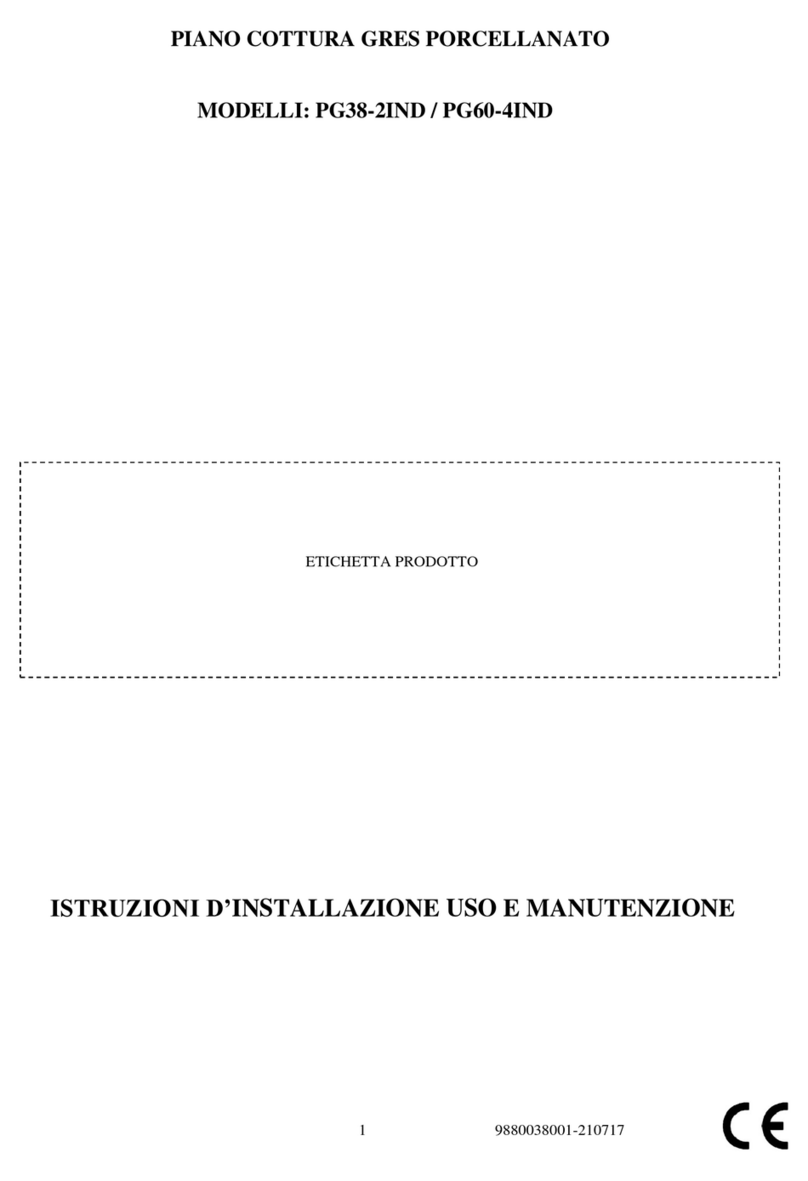
Smalvic
Smalvic PG38-2IND Quick start guide

Smalvic
Smalvic 1023840400 User manual
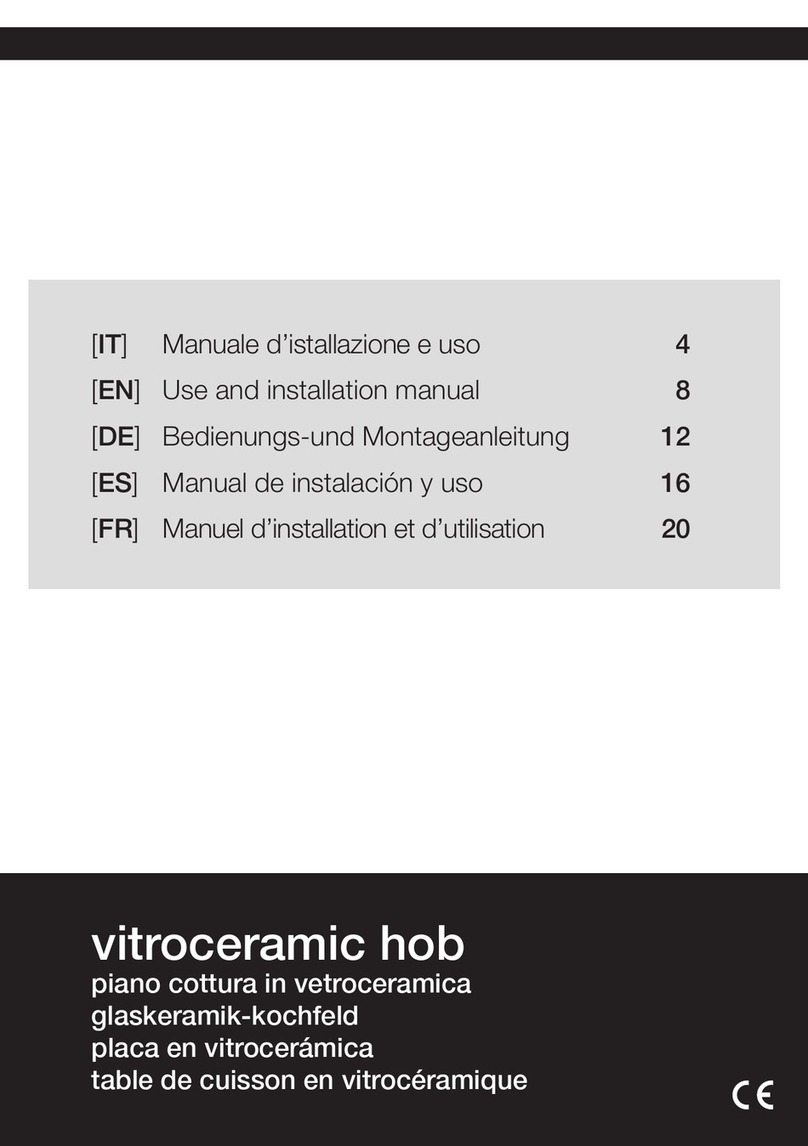
Smalvic
Smalvic SPVC75 Technical specifications
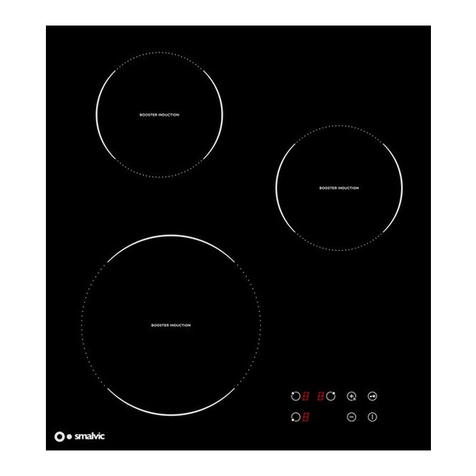
Smalvic
Smalvic 1023850400 User manual
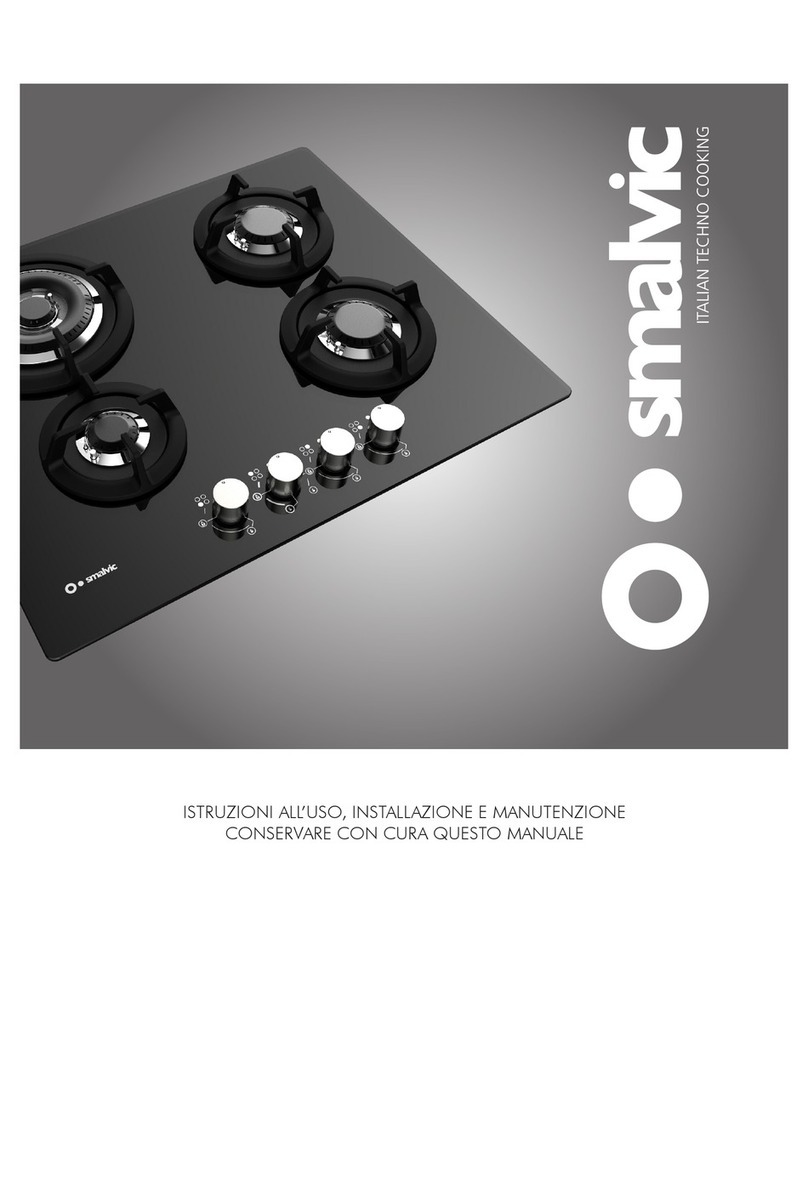
Smalvic
Smalvic PI-MX60V3GITC Operation instructions
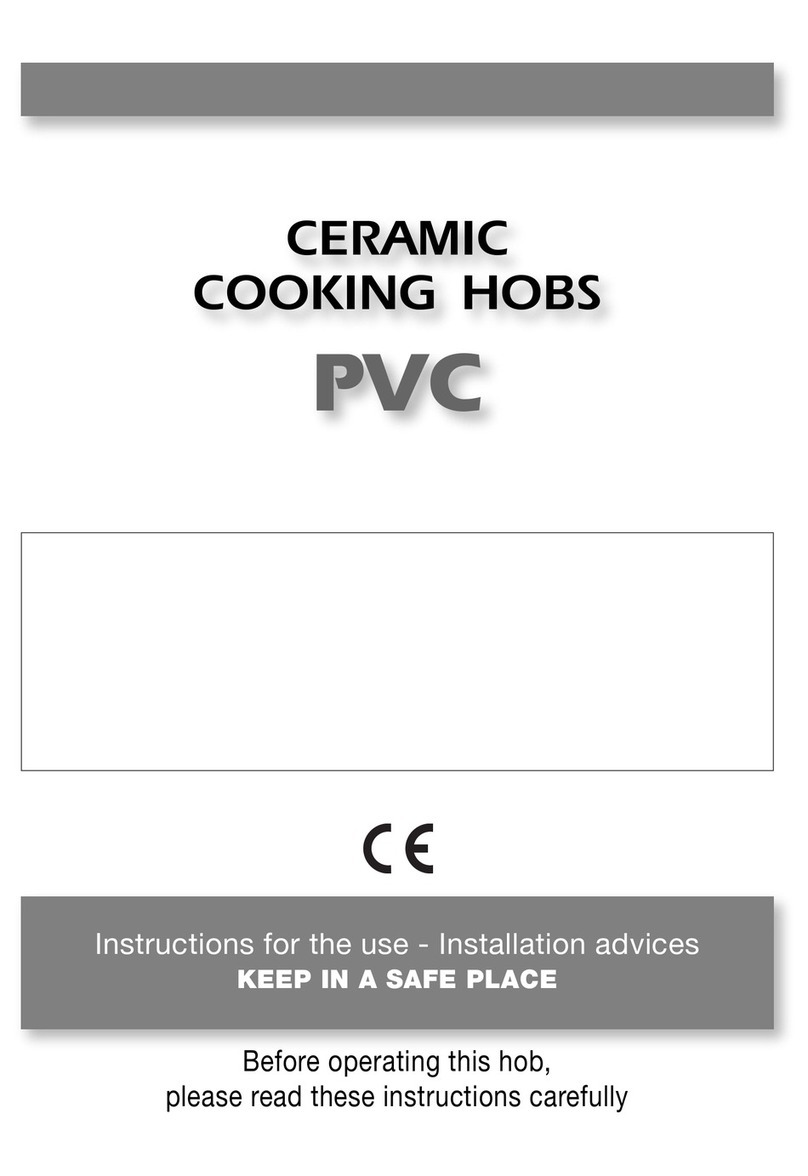
Smalvic
Smalvic PVC Installation and operating instructions
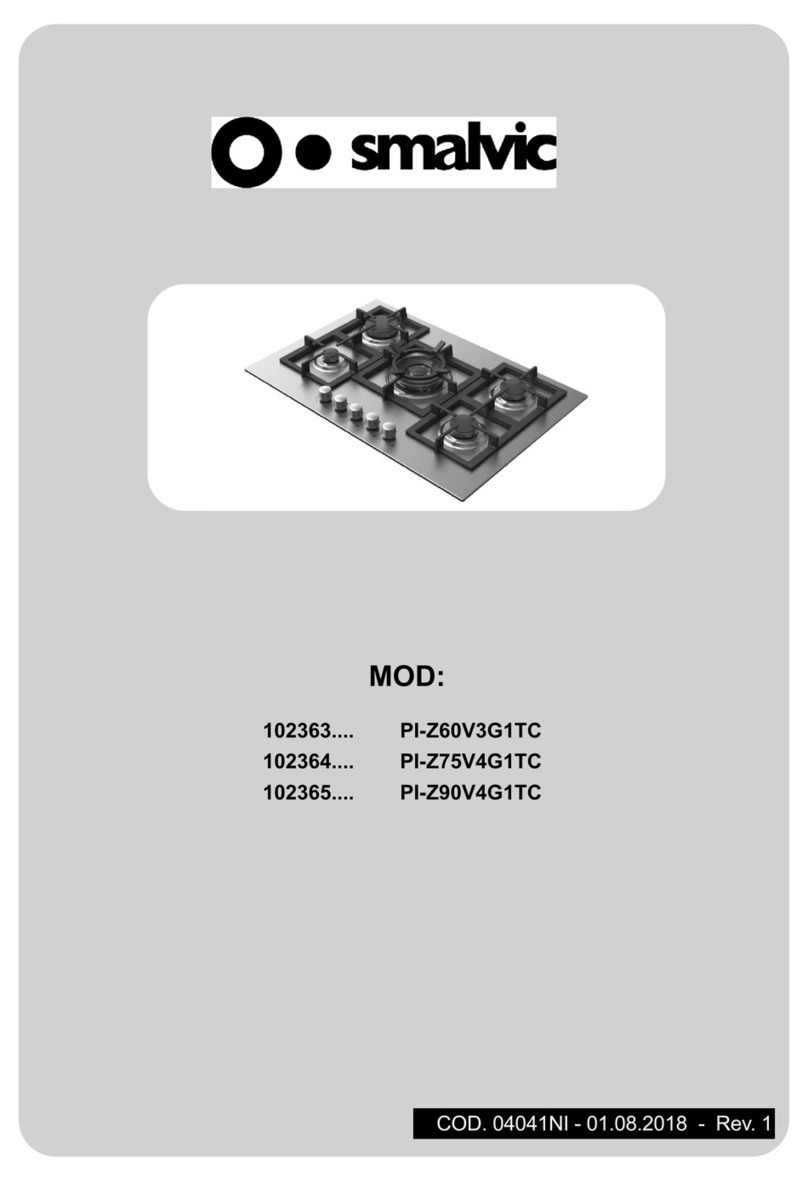
Smalvic
Smalvic PI-Z60V3G1TC User manual
Popular Hob manuals by other brands
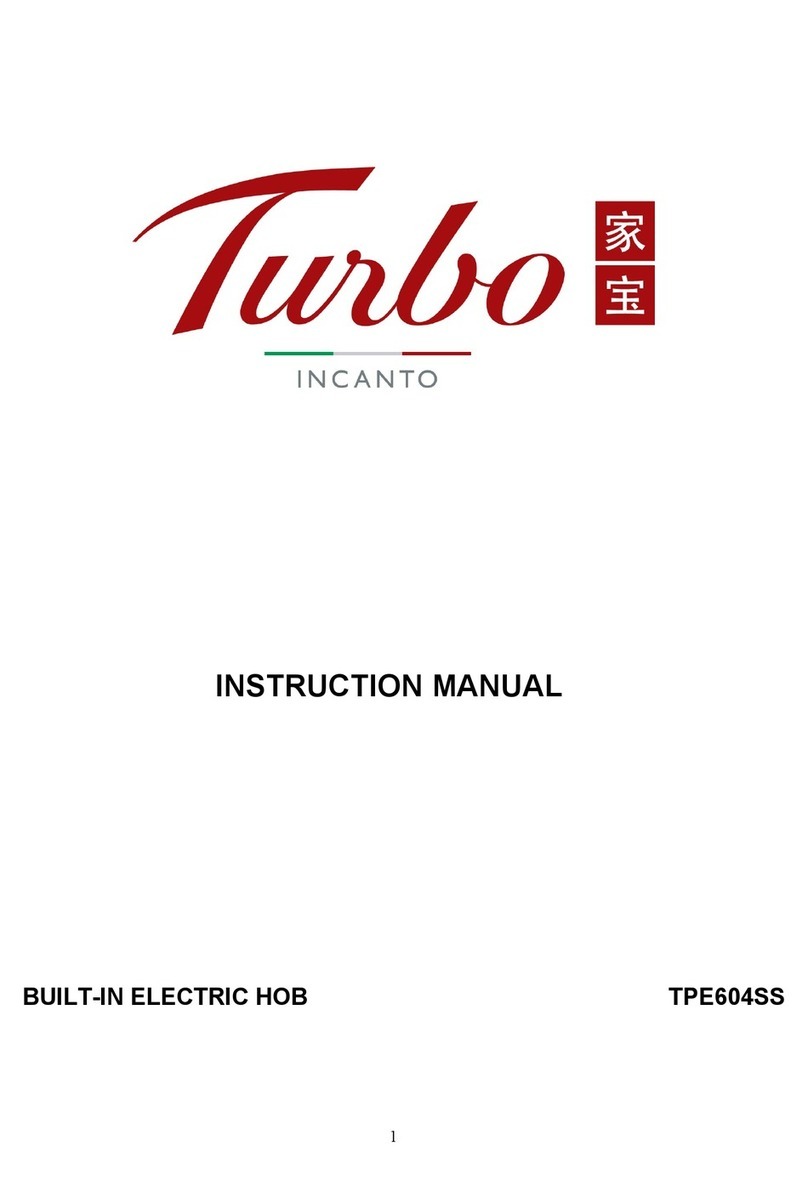
Turbo
Turbo Incanto Series TPJE60SS instruction manual

Kuppersbusch
Kuppersbusch KI6520.0SF Instructions for use
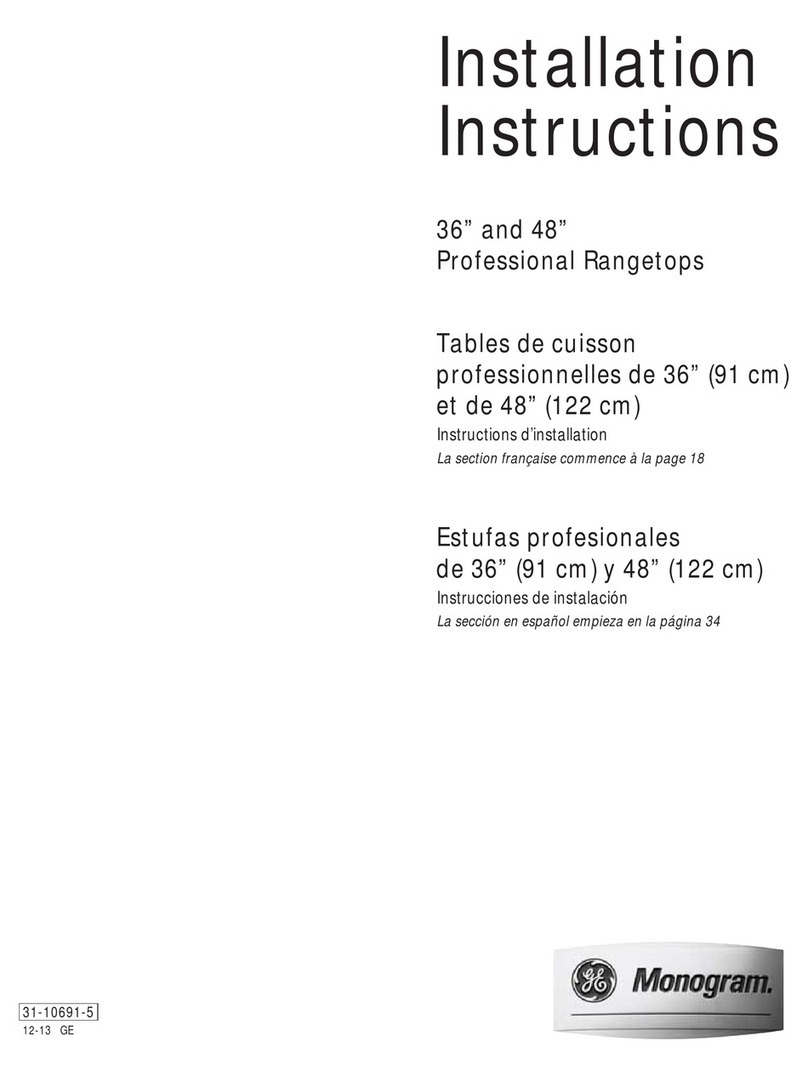
GE
GE Monogram ZGU364NRP7SS installation instructions

Siemens
Siemens ET8 FNP1 Series INFORMATION FOR USE
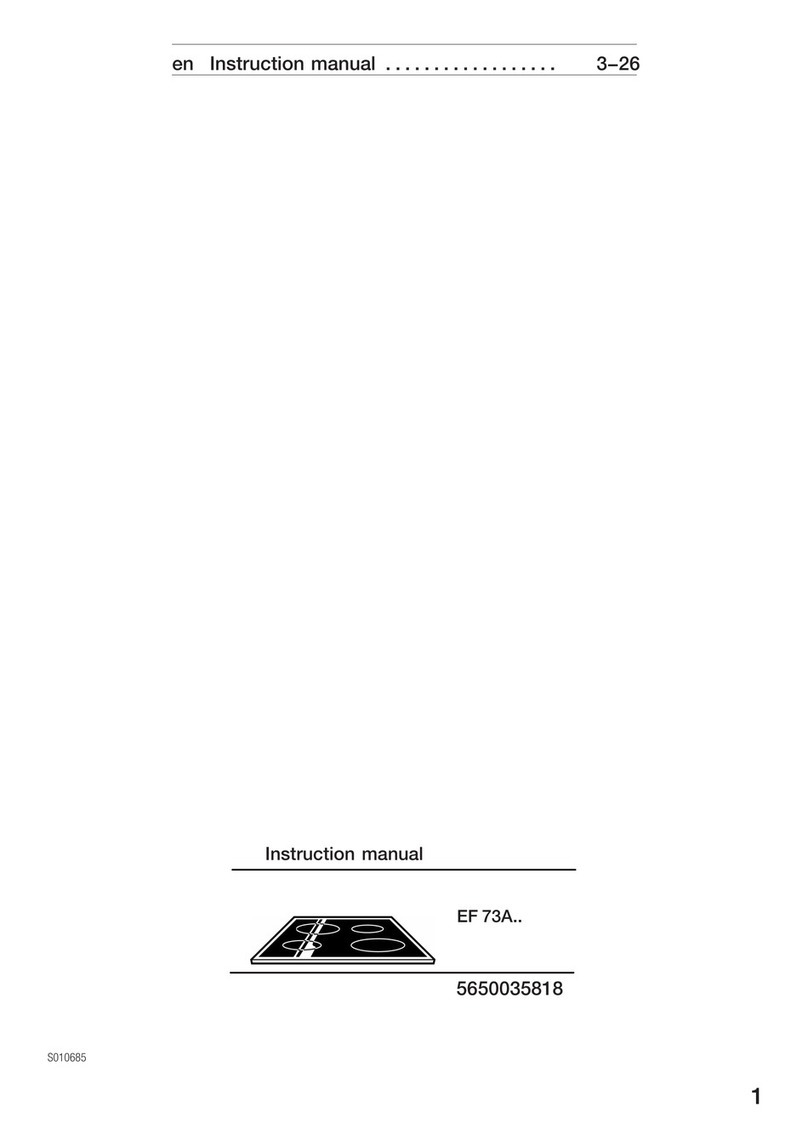
Siemens
Siemens EF 73A Series instruction manual
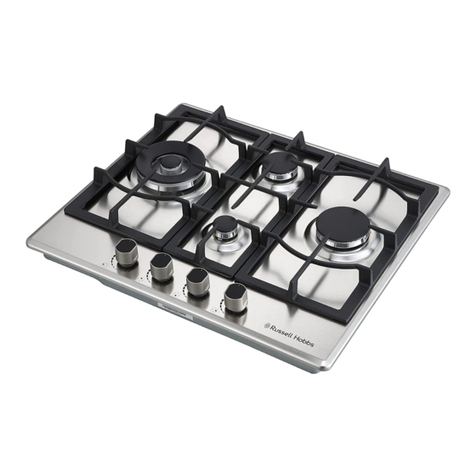
Russell Hobbs
Russell Hobbs RH60GH403SS instruction manual


